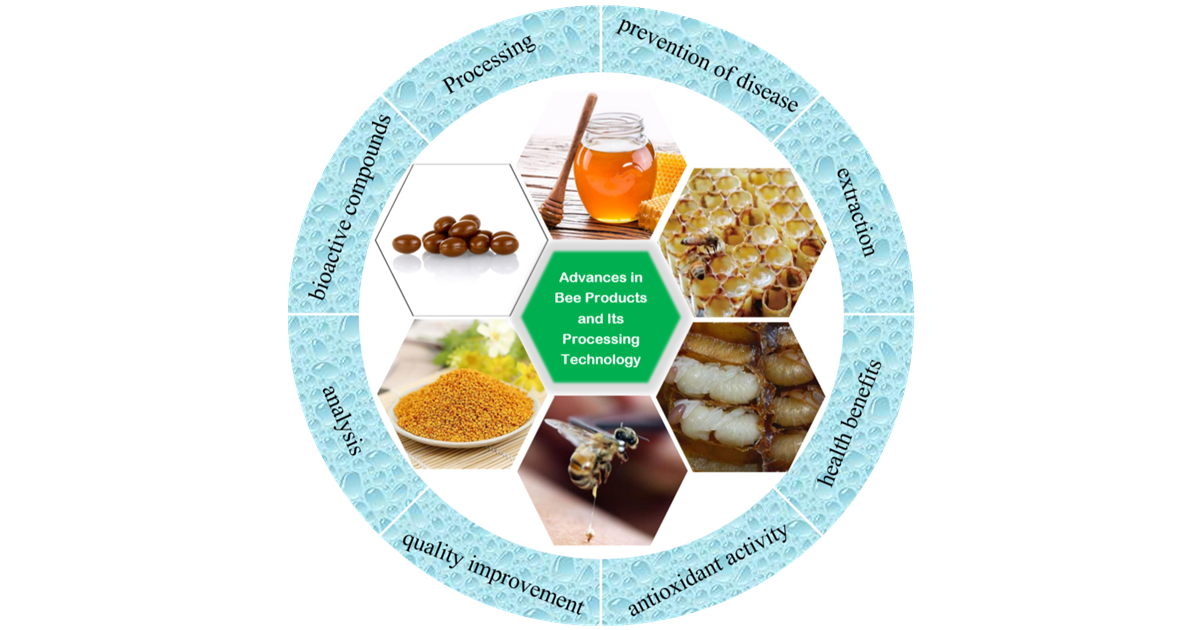- 2.5Impact Factor
- 5.5CiteScore
- 20 daysTime to First Decision
Advances in Bee Products and Its Processing Technology
This special issue belongs to the section “Food Science and Technology“.
Special Issue Information
Dear Colleagues,
Bee products are currently receiving increasing attention because of their remarkable levels of valuable nutrients and bioactive compounds and are well-known for their health benefits. In this Special Issue, we cordially invite scientists to submit their original, unpublished research papers or review manuscripts to compose a Special Issue on several aspects relating to bee products, such as the extraction, identification, characterization, and analysis of major or minor components, bioactive compounds, nutritional values, health benefits, functional properties, analytical methodology, and the effect of processing technology, among others.
I am looking forward to receiving your interesting and innovative work.
Keywords covered in this Special Issue include (but are not limited to):
- processing;
- analysis;
- extraction;
- health benefits;
- prevention of disease;
- antioxidant activity;
- bioactive compounds;
- quality improvement
Dr. Xiaoming Fang
Prof. Dr. Hong-Wei Xiao
Dr. Yi Li
Dr. Hongcheng Zhang
Guest Editors
Manuscript Submission Information
Manuscripts should be submitted online at www.mdpi.com by registering and logging in to this website. Once you are registered, click here to go to the submission form. Manuscripts can be submitted until the deadline. All submissions that pass pre-check are peer-reviewed. Accepted papers will be published continuously in the journal (as soon as accepted) and will be listed together on the special issue website. Research articles, review articles as well as short communications are invited. For planned papers, a title and short abstract (about 250 words) can be sent to the Editorial Office for assessment.
Submitted manuscripts should not have been published previously, nor be under consideration for publication elsewhere (except conference proceedings papers). All manuscripts are thoroughly refereed through a single-blind peer-review process. A guide for authors and other relevant information for submission of manuscripts is available on the Instructions for Authors page. Applied Sciences is an international peer-reviewed open access semimonthly journal published by MDPI.
Please visit the Instructions for Authors page before submitting a manuscript. The Article Processing Charge (APC) for publication in this open access journal is 2400 CHF (Swiss Francs). Submitted papers should be well formatted and use good English. Authors may use MDPI's English editing service prior to publication or during author revisions.
Keywords
- processing
- analysis
- extraction
- health benefits
- prevention of disease
- antioxidant activity
- bioactive compounds
- quality improvement

Benefits of Publishing in a Special Issue
- Ease of navigation: Grouping papers by topic helps scholars navigate broad scope journals more efficiently.
- Greater discoverability: Special Issues support the reach and impact of scientific research. Articles in Special Issues are more discoverable and cited more frequently.
- Expansion of research network: Special Issues facilitate connections among authors, fostering scientific collaborations.
- External promotion: Articles in Special Issues are often promoted through the journal's social media, increasing their visibility.
- e-Book format: Special Issues with more than 10 articles can be published as dedicated e-books, ensuring wide and rapid dissemination.

